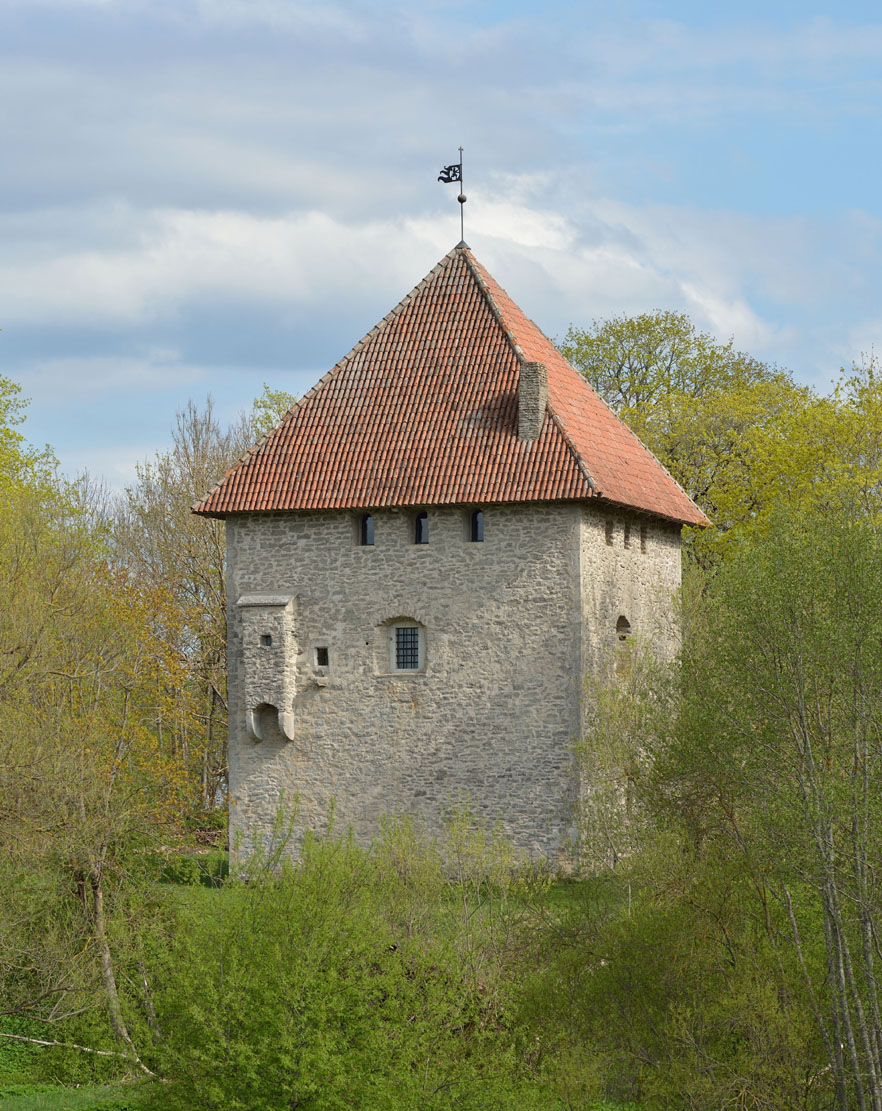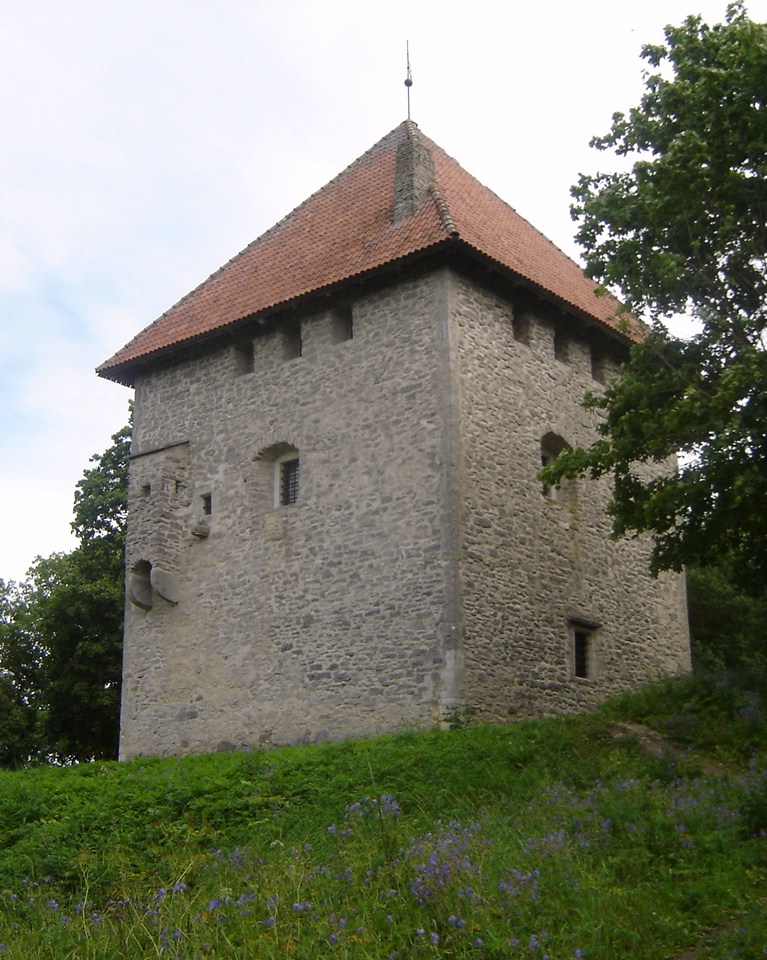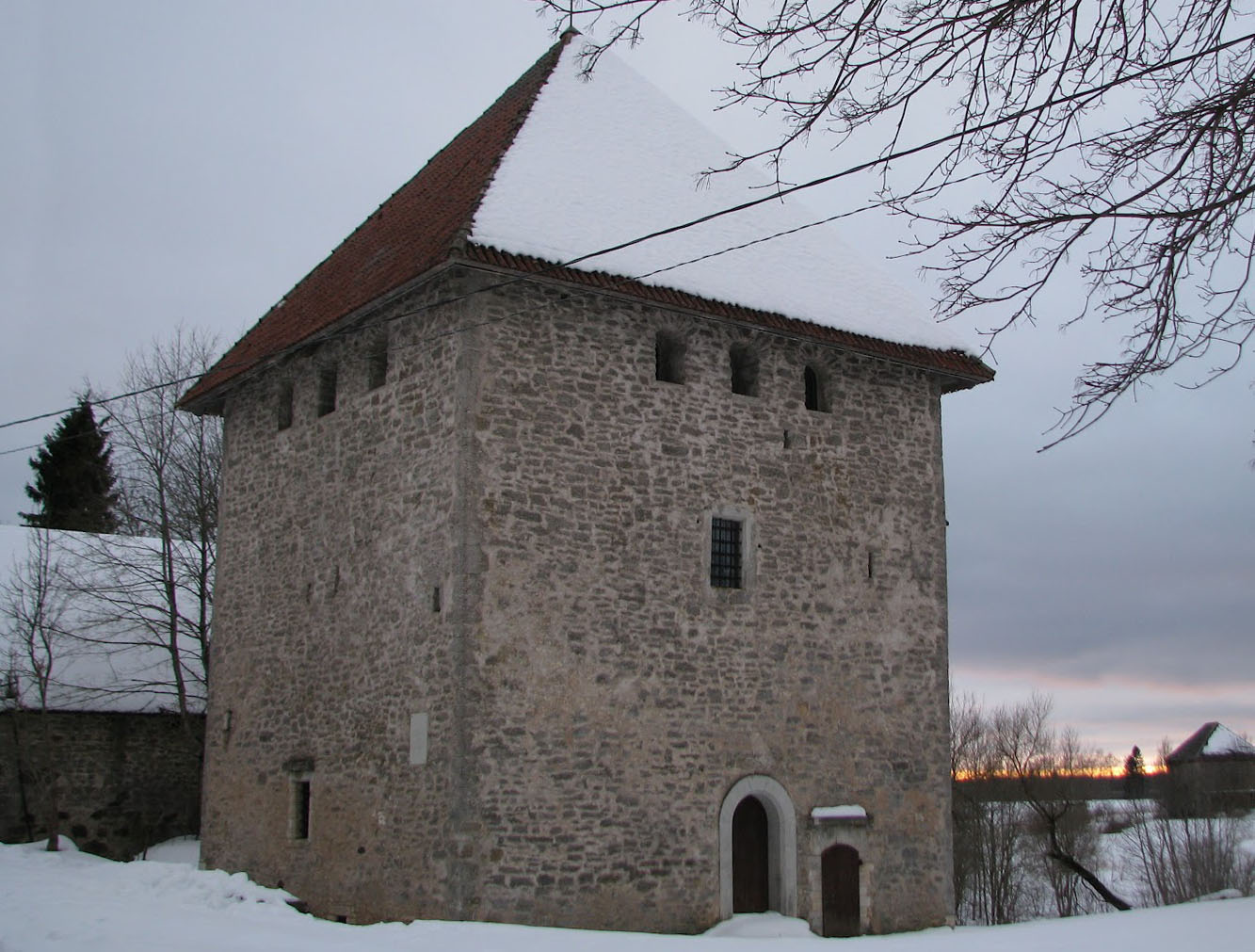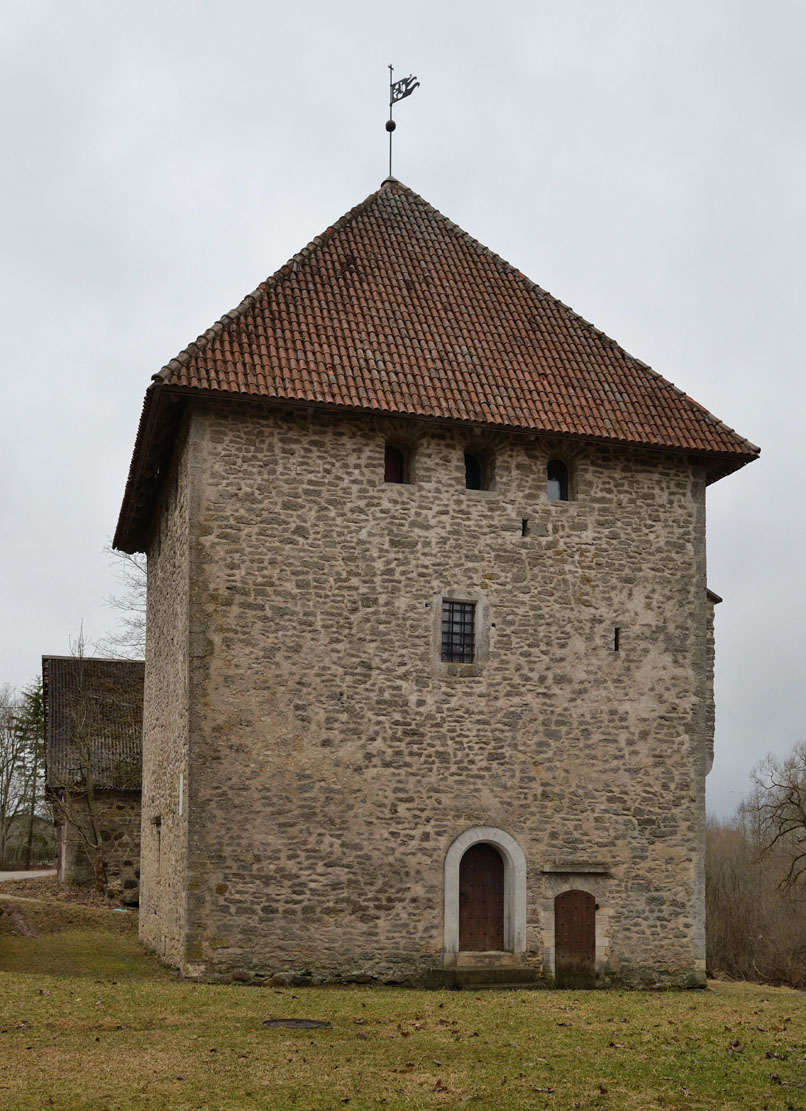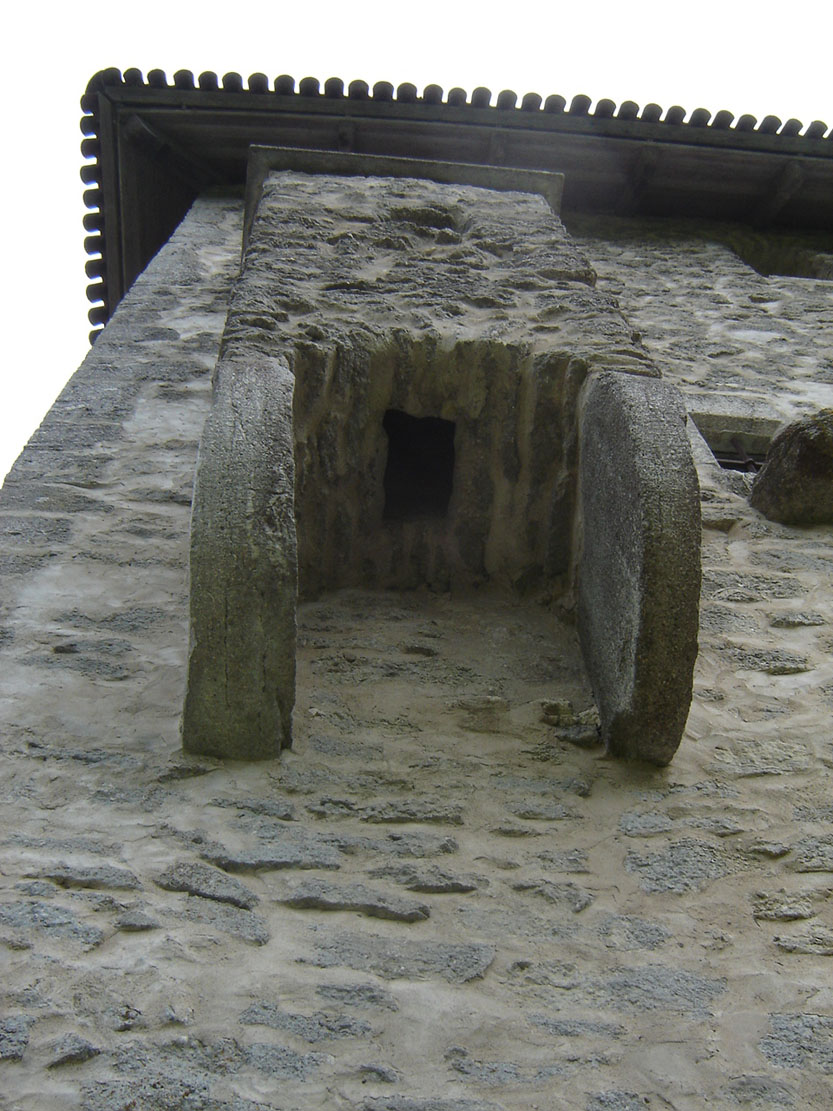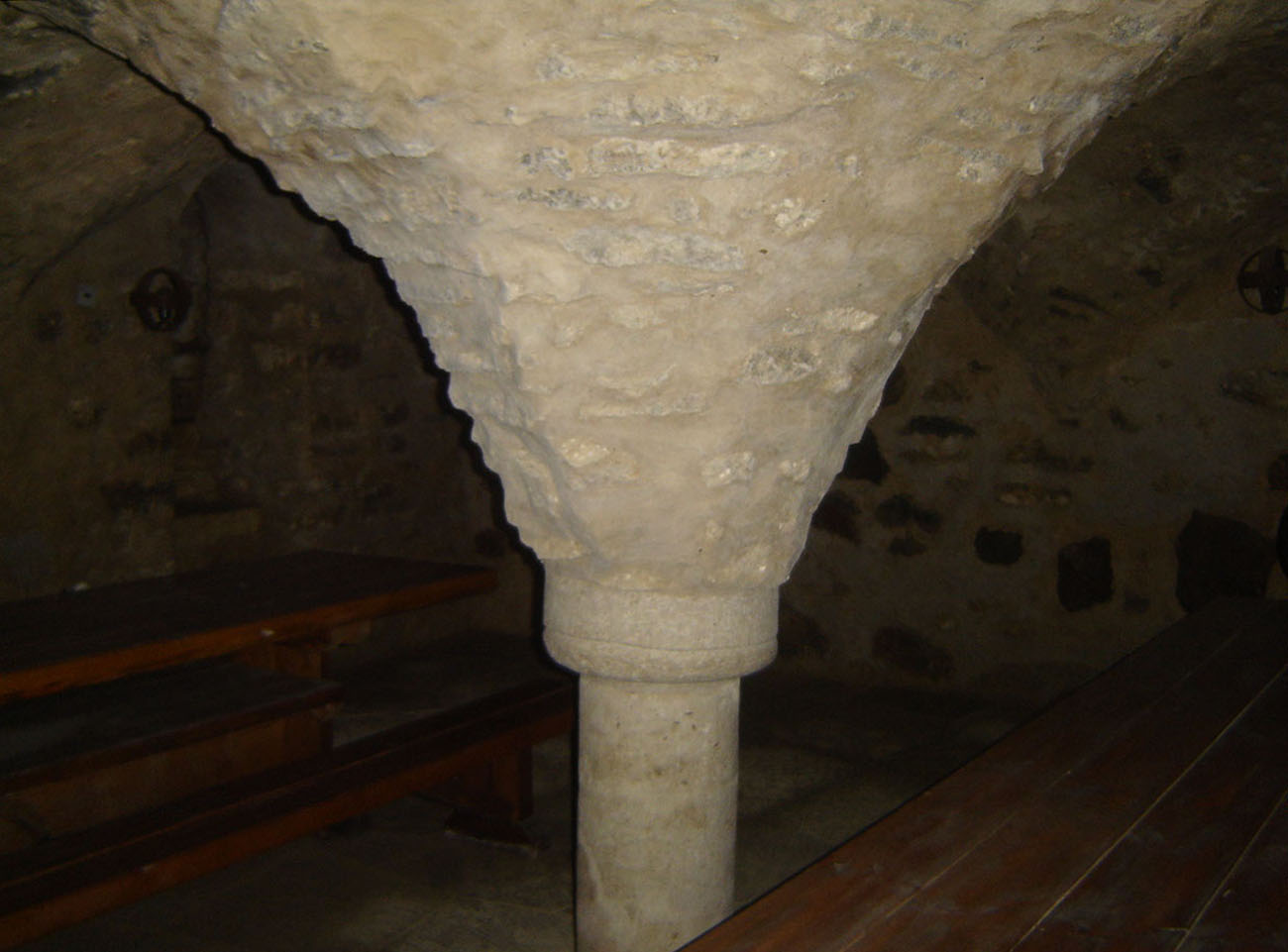History
The Wack Tower was built in the second half of the 14th century, as the then widespread in northern Estonia defensive seat of vassal knights, living in fear of armed uprisings of the ethnic population of these lands. Wack’s first owners was the Wacker family, and the first direct mention of the tower dates back to 1442. During the following centuries, it often changed owners, but always remained in private hands. Neglected during the communist era, it was renewed in the 1980s.
Architecture
The tower is a four-sided structure on a plan similar to a square, erected from the local limestone. The ground floor was a representative and well-protected room with a stone vault. On the first floor there was a living room with a chapel, a bedroom, a fireplace and a bay latrine and sanitary facilities. The top floor was the defensive level, whose wooden ceiling was protected from fire by the layer of limestone slabs. The tower also had a basement with a vault supported by a single pillar. The communication between the floors was ensured by stairs placed in the wall with a thickness of 1,2 to 2,4 meters.
Current state
Wack is a valuable, fully preserved example of a medieval, knight’s tower house, one of two that survived in Estonia. Inside the monument there is a small museum.
bibliography:
Borowski T., Miasta, zamki i klasztory. Inflanty, Warszawa 2010.
Tuulse A., Die Burgen in Estland und Lettland, Dorpat 1942.


